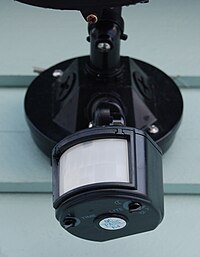
Photo from wikipedia
Automated driving systems operated at SAE levels 4 and 5 require a far-reaching fault-tolerant design. To meet this need at the actuator level, we present an integrated vehicle motion control… Click to show full abstract
Automated driving systems operated at SAE levels 4 and 5 require a far-reaching fault-tolerant design. To meet this need at the actuator level, we present an integrated vehicle motion control approach that is able to tolerate a wide range of different actuator degradations and failures as well as tire blowouts in vehicles featuring four wheel-individual steering, drive, and brake actuators. The approach, which is based on non-linear model predictive control (MPC), tracks a temporal sequence of reference poses. Fault tolerance is achieved by reconfiguration of the MPC’s constraints, weights, and prediction model, which consists of a double-track vehicle and a brush tire model. The evaluation of the approach is based on two reference trajectories. The example of a simple single lane change trajectory in IPG CarMaker demonstrates the basic functionality of the approach. The example of a demanding decelerated single lane change trajectory shows that the approach is subject to limitations when tolerating different degradations and failures. Still, the observed limitations can be explained by the interplay of the specific degradation or failure and the demanding nature of the trajectory. Therefore, the results indicate that the suitability of fault-tolerant vehicle motion control as part of a system-wide safety concept is strongly connected to the range of possible driving scenarios that an automated driving system can encounter.
Journal Title: IEEE Access
Year Published: 2023
Link to full text (if available)
Share on Social Media: Sign Up to like & get
recommendations!